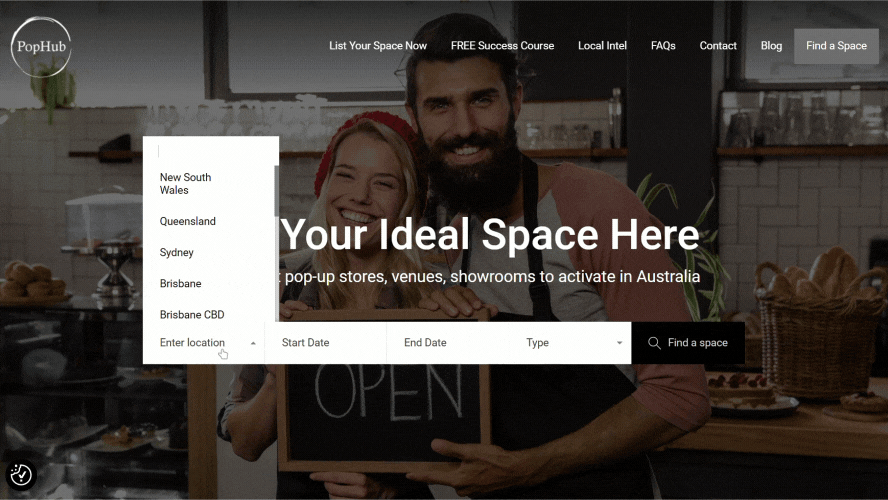
How to Successfully Launch a Pop-Up Store in a Shopping Centre
Pop-Ups Aren’t Just a Trend—They’re a Smart Move for Any Brand
Pop-up stores offer a flexible, low-risk way for brands to step into physical retail. In today’s market, they’re not just for new businesses—established names are using pop-ups to test new ideas, build local buzz, and create memorable customer experiences.
Opening a pop-up inside a shopping centre puts your brand in the middle of the action, tapping into natural foot traffic and ready-made audiences. Whether you’re launching a seasonal range, testing a product line, or creating a brand moment, a mall pop-up can be a powerful move.
Why Shopping Centres Are a Smart Choice for Pop-Ups
1. Built-in Foot Traffic
Thousands of shoppers pass through shopping centres every day. Unlike standalone stores that need to generate their own traffic, a pop-up inside a mall benefits from the steady flow of visitors already spending time—and money—in the area.
2. A Wide Range of Customers
Shopping centres attract everyone from students to families to professionals. This gives you a chance to reach diverse customer groups without heavy marketing spends. You’ll be seen by people who might not find you online.
3. Flexible Lease Options
Pop-ups inside malls often come with short-term, seasonal, or event-based leasing. You can set up for just a few weeks or months, which is ideal for product launches, testing a new market, or riding a seasonal shopping wave like Christmas or back-to-school.
4. Lower Overheads and Risk
Because you’re not committing to a long-term lease, you avoid many of the financial risks associated with traditional retail. A pop-up allows you to experiment with physical selling, collect customer feedback, and adjust your strategy—all without a huge upfront investment.
Key Steps to Opening Your Mall Pop-Up Store
1. Choose the Right Centre and Location
Not all shopping centres are created equal. Look for locations that match your target customer. A boutique product might work better in an upmarket centre, while lifestyle goods could shine in a suburban mall.
Inside the centre, position matters too. High-traffic areas near food courts, cinemas, or major anchor tenants usually offer the best visibility.
2. Understand the Leasing Process
Shopping centres usually offer “specialty leasing” programs for short-term tenants. Leasing terms can vary widely—from casual leases for a few weeks to longer activations. Make sure you’re clear about costs, fit-out rules, insurance requirements, and permitted trading hours.
3. Create an Experience, Not Just a Shop
Pop-ups work best when they offer something more than just products. Think about how to engage visitors:
Hands-on experiences like demos or samples
Limited-edition products or first access to new collections
Interactive displays or social-media-friendly moments
You’re not just setting up a store—you’re creating a reason for people to stop, explore, and remember you.
4. Plan Your Marketing Ahead of Time
Don’t rely only on mall foot traffic. Start building awareness before you open:
Use email newsletters and social media teasers.
Share behind-the-scenes setup moments.
Promote exclusive in-store-only offers to drive urgency.
Collaborate with local influencers or creators where possible.
Leverage the shopping centre’s marketing support too—many offer opportunities to be featured on their website, directories, or social media.
5. Get Your Inventory and Pricing Right
Since space is limited, be strategic. Focus on bestsellers, seasonally relevant products, or items with strong visual appeal.
Create pricing tiers to cater to impulse buyers and bigger spenders alike. A mix of affordable entry points and premium offers can help you maximise every customer interaction.
Common Challenges (And How to Avoid Them)
While pop-ups are flexible, there are challenges to watch out for:
Timing and Logistics: Shopping centres often have strict setup and takedown schedules. Make sure you’re organised and ready to go.
Fit-Out Costs: Keep displays lightweight, modular, and compliant with centre guidelines to avoid unexpected costs.
Staffing: Make sure you have enough support to cover busy periods, especially weekends and late-night trading.
Customer Experience: Keep wait times short, checkouts smooth, and interactions memorable.
Final Thoughts
Launching a pop-up store inside a shopping centre can fast-track your brand’s growth. It’s a chance to be seen by thousands of potential customers, build trust through in-person interaction, and create moments that stick.
By planning carefully, focusing on experience, and using every opportunity to connect with shoppers, your pop-up can do more than sell—it can start real relationships with your future loyal customers.
If you’re ready to find the perfect shopping centre space for your pop-up, PopHub can help! We specialise in making short-term retail simple—so you can focus on what matters most: bringing your brand to life.

